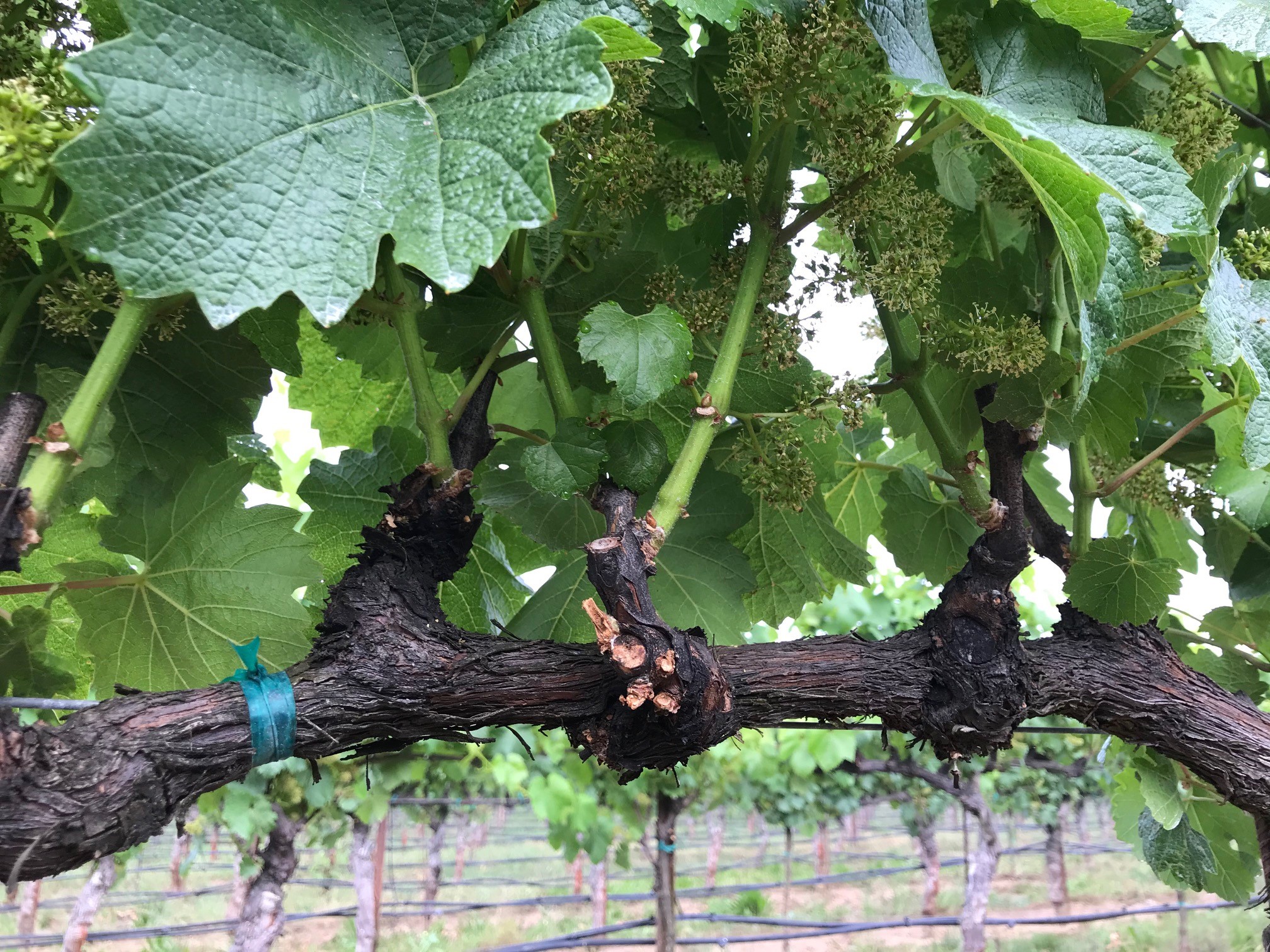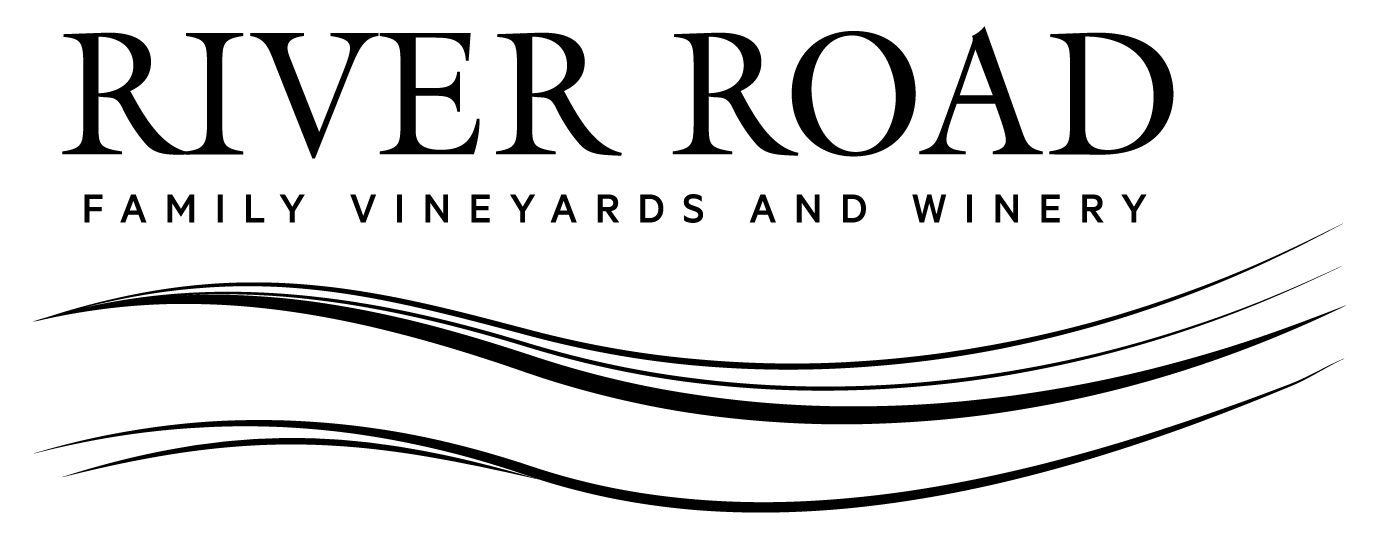VINEYARD UPDATE – ROLLER COSTER WEATHER AND HAPPY VINES
Only a week after I made this statement in last month’s newsletter, “there is very little chance of heavy precipitation left this rain season”, Mother Nature took on my challenge and began sending cool, cloudy weather our way!
The first raindrops started falling on May 11, and damp weather continued through May 18. Although not a huge amount (a little over 1.25 inches of rainfall was recorded by our weather station), it was a concern due to the early start of bloom. (For grapevine flowers exposed to heavy rain, successful pollination is unlikely.) Fortunately, the rain occurred before most of our flowers were in bloom, so the crop is still looking good!

Cold, wet conditions were the norm during the middle of May, then the skies cleared and temperatures started to climb. After passing through seasonally normal temperatures in the 70’s and 80’s, the mercury didn’t stop rising. By the last week of the month, we were into the upper 90’s, almost touching 100 degrees Fahrenheit in our “cool” Russian River Valley location!
Even as daytime temperatures were climbing, I was surprised by a late May frost alarm. This is well after our normal last frost date, but temperatures dropped down to 35 degrees Fahrenheit just before sunrise on May 22. Fortunately, dawn was only a few minutes away, and we didn’t reach the freezing point.
The vines have been loving the recent conditions, with soil moisture levels topped up, and lots of California sunshine. Chardonnay and Pinot Noir both sped through bloom during the later days of May, and did so very consistently, benefiting us with more uniform ripening of the grapes later in the season. Canopy growth has also been quite rapid, with our shoots almost reaching the top of our trellis stakes.

CANOPY AND GROUNDCOVER MANAGEMENT
As mentioned above, May and June are times of very rapid vine growth, and a great deal of activity is required to manage this vigor. One key task, which was just completed, is shoot thinning.
Shoot thinning allows us to manage crop levels for each vine, keeping each vine in balance. By reducing the number of shoots, we are also removing excess clusters, preventing overcropping of the vines in a vigorous year like this one. We follow shoot removal by adjusting the movable wires on the trellis, holding remaining shoots vertical and providing them something to grab onto with their tendrils. Our trellises are designed to maximize capture of sunlight, provide protection for the clusters from direct sun, and allow airflow around the clusters for mildew prevention, but the vines need some coaxing to stand up straight and achieve the best results.

Not only are the vines staying active, but our cover crop is too. We’re constantly engaged with the tractor work of mowing and cultivation. For the cover crop, we keep it trimmed, but want the grasses and legumes to pull excess water out of the soil between vine rows until dry days of summer cause these plants to go dormant.
Directly below the grapevines’ canopy, along the length of each row, our goal for soil management is different. In those areas, we want to limit competition for available water and nutrients. We’d prefer it if the cover crop would stay in the lanes between vine rows, but they can be an unruly bunch, covering the entire vineyard floor if allowed. In response, we employ specialized cultivation to remove the plants within 18 inches of the vine trunks, yet leave the grapevines untouched. Here you can see the results, all without using herbicides!

We’ll continue the high pace of activity in the vineyard, balancing the vines to produce the highest quality Pinot Noir and Chardonnay grapes this vintage. All signs are pointing to a great year!
On behalf of the entire team at Ron Rubin Winery, we wish you all continued good health!




